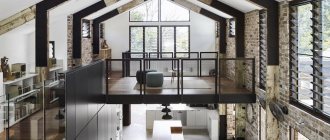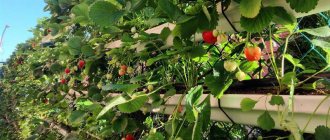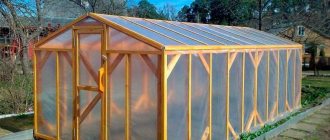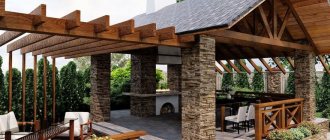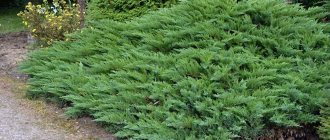The birch genus (Betula) includes about 40 species of trees and shrubs found in the temperate and cool Northern Hemisphere. Thanks to its decorative qualities, the picturesque tree with an airy crown has found wide application in garden landscape design.
Varieties and types of birch are fully adapted to the climate of the middle zone. The culture is characterized by rapid growth and unpretentiousness. Low decorative birch trees are beautifully presented as tapeworms against the background of a lawn, as well as in groups, in the company of, for example, conifers.
Depending on the species, the bark can be white, dark, yellow or even slightly pink. The root system is usually small and highly branched, so there is not sufficient stability in strong winds.
Caring for birch is not difficult, and planting in containers can be done throughout the season.
Pros and cons of growing birch on the site
Birch itself is quite a beautiful and graceful tree. Its root system is very strong, so it is important to be able to combine the plant with other varieties of crops on the site. In addition, it has several impressive advantages:
- does not shade the area due to its slender crown (applies to a young tree);
- stands out well against the background of a nondescript courtyard, drawing attention to itself;
- combines with many ornamental crops;
- wood can visually expand space;
- The plant takes root well in any conditions.
When choosing this tree for planting on the site where the landscape design is being formed, we must not forget about the following disadvantages:
A tall birch tree near the fence in the yard will provide shade for plants that do not need sunlight Source gorodskievesti.ru
- the plant has a powerful root system (it can interfere with the arrangement of individual objects: paths, rock gardens);
- birch is demanding of nutrients, so it is better to plant it in places where there are no other crops or they are not picky about the soil composition.
On a note! It is not recommended to plant birch in an area where there is a lawn. This is due to the fact that the roots of the tree strongly absorb the beneficial substances contained in the soil.
Alphabetical index of plants from “A” to “Z”
Use the alphabetical index of plants for landscape design to view a catalog created by our specialists of several hundred varieties of plants used by designers in landscape projects for landscaping and landscaping, photographs of trees and shrubs, descriptions of their varieties and varieties, color, flowering, habit, crown height and diameter depending on the age of the plants. Examples of using plants from the catalogue, dendrological plans and projects of decorative groups can be found in the portfolio of landscape projects.
You can also use the plant catalog search.
Choosing a landing place
Seedlings are traditionally planted in the autumn-spring period. Gardeners believe that this time is the most favorable. The location should be chosen so that it is slightly shaded. The ideal option is the area behind the house or in front of the facade, where the shadow falls at certain times of the day.
It is highly undesirable for conifers and birch to be neighbors Source mansion1.ru
If you choose such a zone for the development of birch in a summer cottage, you can prevent the evaporation of moisture from the top layer of soil. This will provide sufficient moisture for the root system and will not slow down the growing season.
In addition to choosing a location, you should also decide on the depth of the hole. This parameter depends strictly on individual conditions: the age and size of the root system of the seedlings. Usually no more than 100-1200 cm. It is also necessary to take into account the properties of the soil: loose, slightly acidic soil is suitable. It is allowed to contain a small amount of humus.
Planting birch trees in a front garden with flowering perennials Source avto.goodfon.ru
Pruning and caring for weeping trees
To stimulate crown growth, in the first years you need to cut all young shoots short (up to 15-20 cm) so that the top bud is left at the end of the shoot.
All shoots appearing below the grafting are promptly removed.
Trees that bloom in spring are pruned after flowering.
The apical buds are removed during the summer. This will encourage the side buds to grow and the crown will become thick.
There is a “candelabra” method of forming a crown. To do this, in the spring, when the buds have not yet blossomed, remove the top bud at the bend of each branch and cut off the lower end of the branch. From the remaining upper bud, a new shoot will begin to grow, first upward, and then the direction of growth will change downward, forming a candilabra over time and expanding the crown.
Ideal combinations of birch with other plants
Birch gets along with some plant species on the site. Excellent proximity is obtained with the following crops:
- low growing berries. For example, it could be strawberries. This plant does not require much care; it does not need a lot of moisture and sun. The berries ripen well in the partial shade created by the birch crown;
- if the plant is planted on sandy soil, then the ideal neighborhood for birch is geranium, May lilies of the valley or fern.
- creeping tenacious looks good next to birch in almost any type of soil. In general, the height of the crop after the growing season reaches 25-35 centimeters, blooms with small lilac flowers that thrive in shaded areas. The low-growing plant is unpretentious, so both it and the birch will have enough nutrients;
- Thunberg barberries are good company for birch. But, you need to remember that perennials can develop very quickly and create obstruction in the mini-birch grove on your site. To reduce the risk of this phenomenon, you will have to trim the undersized crop in a timely manner;
- A fern will serve as a good background for a birch tree. It will remain bright green and will withstand drought well when the birch roots absorb maximum moisture. The beautiful carved leaves of the perennial and the graceful crown of the tree will create a unique accent on the landscape, and both plants can be located in one large flower bed.
The birch trees on the site do not coexist with coniferous crops. Pine deserves attention. She is an unpleasant neighbor. After all, each of the trees has an impressive root system, which will try to absorb nutrients from the soil as much as possible.
Lilac and birch are planted in the yard at a distance of at least 3-4 meters Source blogs.pravostok.ru
On a note! Birch and coniferous crops are best planted at a decent distance from each other. It is also important not to plant them near foundations and buildings on rubble.
Having a pond near the birch is an alternative solution, since birch loves humidity. This could be an artificial pool, your own reservoir or pond.
Spreading
Silver birch is most common in the European part of our country, in Western Siberia, Altai, and the Caucasus. This species also grows in Western Europe, reaching 25 meters. Weeping birch grows mainly in the forest zone of the corresponding territories. Used for landscaping urban green areas.
In the forest, this species can be found both in mixed deciduous forests, where oak or linden, elm or aspen grow nearby, and in pure birch forests. In the steppe zone it can form forest islands. It spreads by self-sowing in areas of former fires, abandoned fields, and other disturbed habitats. In the city you can often see shoots of young birch trees breaking through roof coverings on the roofs of houses and growing on the roadsides by themselves.
Does birch have any benefits and what are they?
A young birch tree still requires some care, but a thick-trunked tree that will grow in a few years will perfectly protect the walls of houses from the wind. Therefore, it is better to plant it on the windy side. With the help of the correct location of the plant, you can easily prevent the development of drafts and make the yard quiet.
Birch trees can be planted on the site next to flower beds of perennial plants Source ayalizimahi.ru
How to remove a birch tree from a site if such a need arises
It happens that a birch tree in a garden plot can be an obstacle to the organization of landscape objects or to the construction of certain buildings. Then you will have to get rid of the plant. A current and safe way is to dry the birch. This can be done in two ways.
- Use of salt. To do this, you need to take 2 kg of ordinary table salt and pour it over the base of the trunk around the entire circle. Salt will prevent moisture from entering the soil; accordingly, the root system will not receive proper nutrition and will begin to wither on its own.
- Use of herbicides. One popular remedy is Roundup. To get it into the tree sap, you should make cuts in the bark at the base of the trunk, then add undiluted chemical to them. It will penetrate the crop’s body with the juice and begin to destroy it from the inside. It is rational to carry out such a procedure only during the period of sap flow - and this is the first half of summer.
In most cases, cutting down is not appropriate, since the root system still continues to develop, young shoots will begin to appear, which may be undesirable for the formation of landscape design.
Beautiful flowerbed with birch trees and perennials on a plot with a lake Source stylishgarden.ru
Despite the lack of requirements regarding the care of birch in a summer cottage, it is necessary to take into account its variety. There are plant options that need to be planted in a specially prepared place. This is especially true for trees with a high, beautiful crown, branching and weeping varieties.
Birch trees in landscape design. Description of species
To achieve an attractive landscape design, modern gardeners grow ornamental species in the garden, which do not require too much care. Silver birch, warty birch, has become popular for such purposes. Their height can reach more than 30 meters. Their bark has a smooth surface. As it gets older, it even changes color from white to darker, and also cracks. Karelian birch is its variety. The wood is painted pinkish-brown and has an intricate texture with convolutions. Here are a few more decorative varieties:
- Joungii - the crown is shaped like an umbrella, which consists of small leaves.
- Gracilis - narrow leaves with dissections grow on hanging branches.
- Tristis - decorative birch has a weeping crown.
- Purpurea - leaves are colored brown or dark red.
- Fastigiata - the crown is shaped like a column or an elongated egg.
- Laciniata, Dalecarlica - known for their decorative leaves.
Superstitions
Superstitious people take into account folk signs that relate to planting birch trees on a site. Superstitions often play a huge role, so we suggest you familiarize yourself with the most common ones:
- Birch sap is one of the main ingredients for brewing a magic potion. Therefore, it is undesirable to plant a tree on a residential area, because it will attract evil witches;
- if birch trees are planted near the house, then there will be no happiness in it. The ancient seers spoke about this;
- when a married couple with children lives in the house, they will not be able to build strong relationships if they plant a birch tree in the local area. Such planting will lead to discord and problems in the family;
- Birch trunks often show growths, which indicate that otherworldly forces have entered the yard. Now the house will be in contact with the afterlife.
Birch can withstand frosty winters well, so it will delight owners in the spring Source photosight.ru


